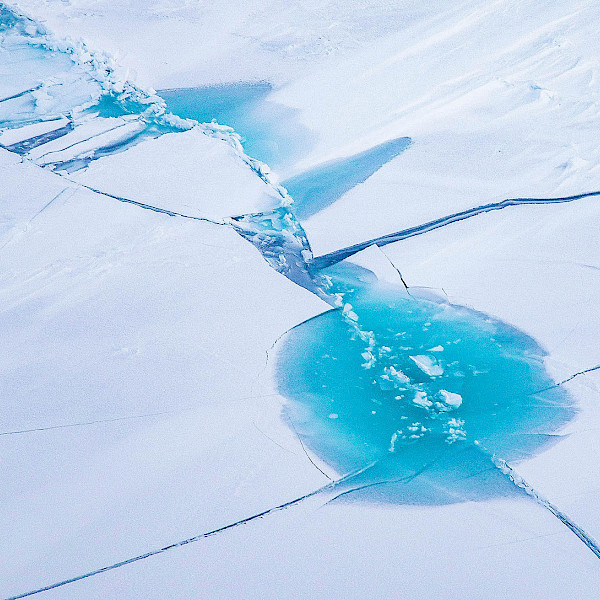Temperature Extremes
In many cases, a weather or climate event with a high impact.
A marked unusual hot weather (Max, Min and daily average) over a region persisting at least two consecutive days during the hot period of the year based on local climatological conditions, with thermal conditions recorded above given thresholds (WMO 2016).

Pooling on sea ice (indicating warming)
Photo: NASA, Jeremy Harbeck
Photo: NASA, Jeremy Harbeck
Attention: Click at the table and use the arrow keys on the keyboard to move the table to right or left!
Download this table as CSV
| Description of extreme event | Detecting and monitoring the extreme event itself | Monitoring ecosystem impacts of the extreme event | ||||||||||
| Name | Description | Expected temporal scale of extreme event itself | Expected spatial scale of extreme event itself | Types of impact (and relevant cascading effects) | Definition of extreme event (see also Definition-sheet) | Variable to detect extreme event | Method to monitor (risk of) extreme event itself (if different from detection method) | Suggested background data needed to assess impact on ecosystem/biodiversity (if any)* | Suggested method to monitor impacts of extreme event (if different from or background data are missing) | Expected temporal scale of impact | Priority FECs to monitor | Reference/Links |
| Cold waves / spells | A marked and unusual cold weather characterized by a sharp and significant drop of air temperatures near the surface persisting at least two consecutive days | Brief (< month) | Large (region/ > 10 km2) | Impact on terrestrial ecosystem - coverage/abundance, survival and reproduction of flora and fauna from suboptimal conditions | Minimal 1, 5 or 10th percentile of Tmin of the time of year | Air temperature measurements | Diversity, abundance, composition, productivity, phenology, spatial structure, ecosystem functions and processes, phenology, demographics, temporal cycles and health for flora and fauna | < 5 years | ||||
| Heat waves / spells | A marked unusual hot weather persisting at least two consecutive days or a persistent period of abnormal warm weather | Brief (< month) | Large (region/ > 10 km2) | Impact on terrestrial ecosystem - coverage/abundance, survival and reproduction of flora and fauna from suboptimal conditions | Top 1, 5 or 10th percentile of Tmax of the time of year | Air temperature measurements | Diversity, abundance, composition, productivity, phenology, spatial structure, ecosystem functions and processes, phenology, demographics, temporal cycles and health for flora and fauna | < 5 years | ||||
| Marine heat waves | Periods of extreme heat in the ocean | Brief (< month) | Large (region/ > 10 km2) | Impacts include shifts in species ranges, local extinctions as well as economic impacts on seafood industries through declines in important fishery species and impacts on aquaculture | ≥5 days with sea surface temperature >90th percentile calculated from >30 year climatic data | Sea temperature measurements |
|
|||||
 Arctic Council Working Group
Arctic Council Working Group